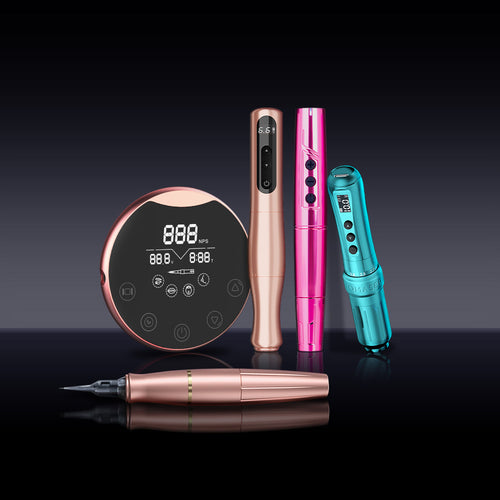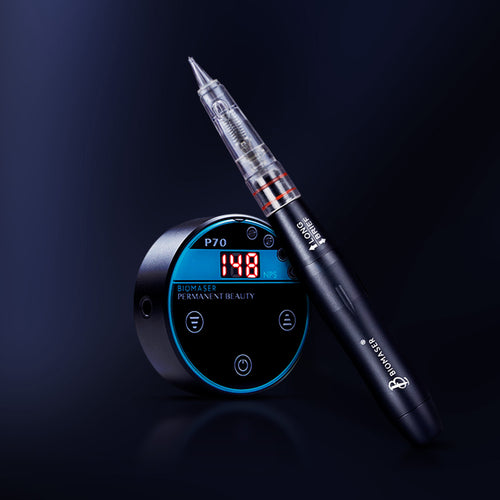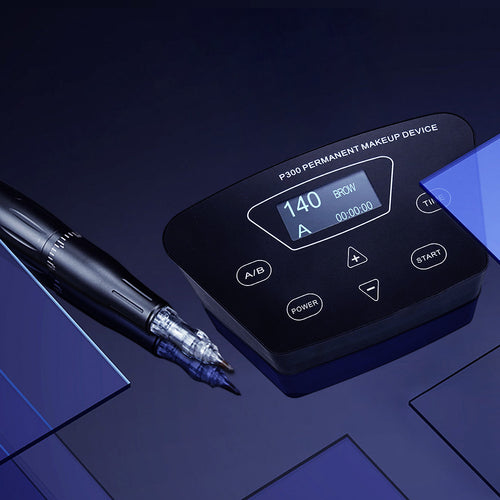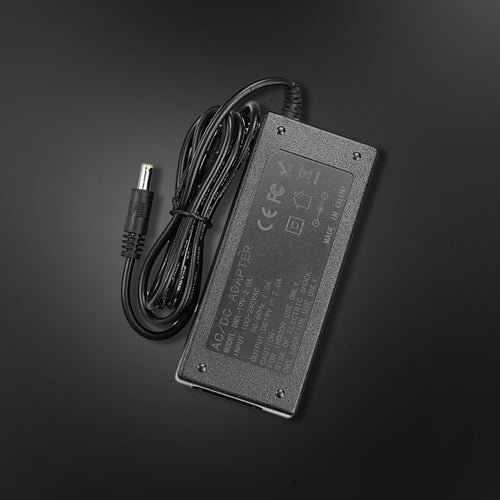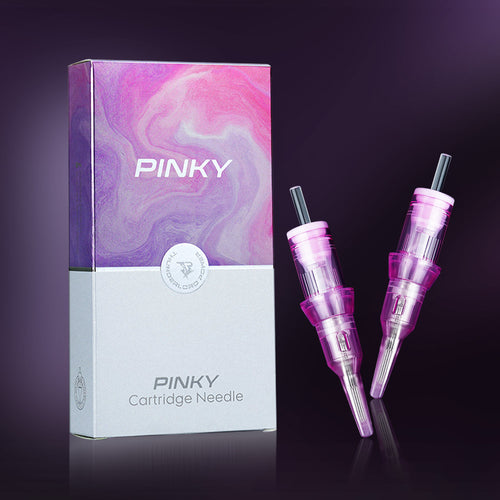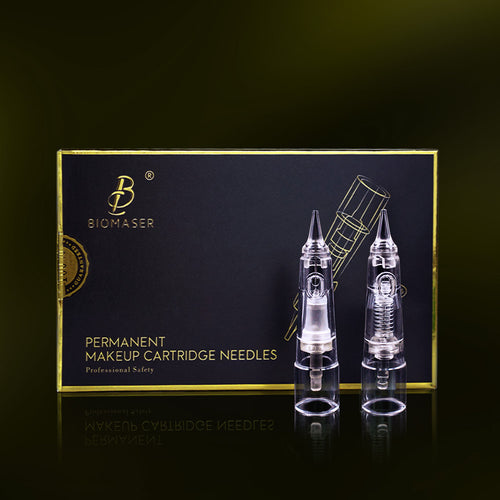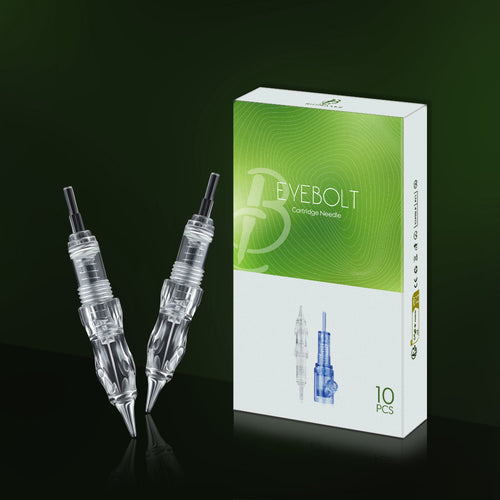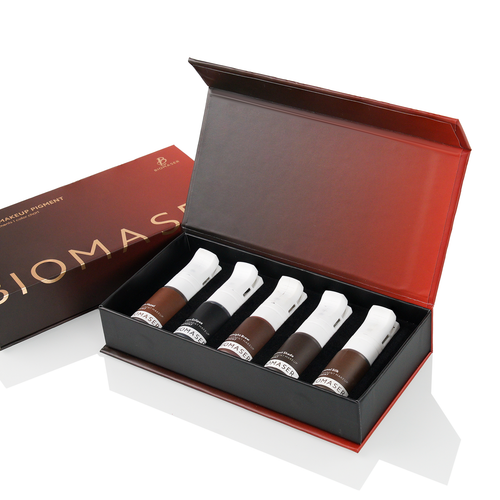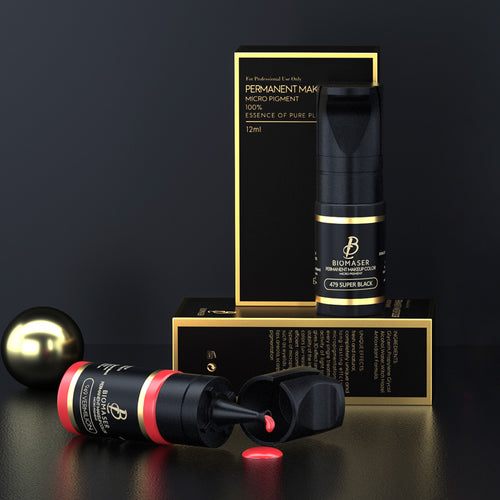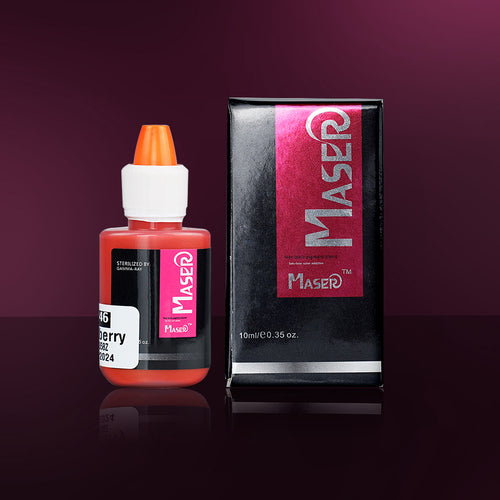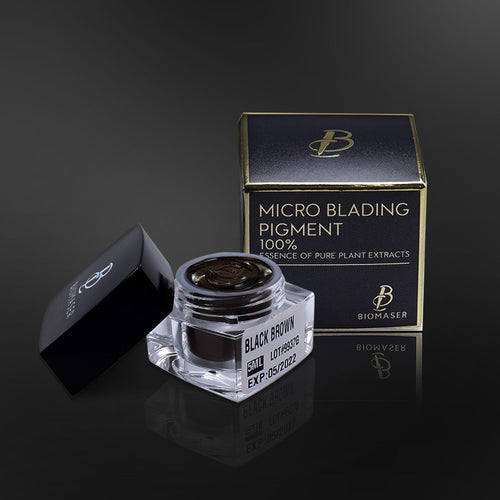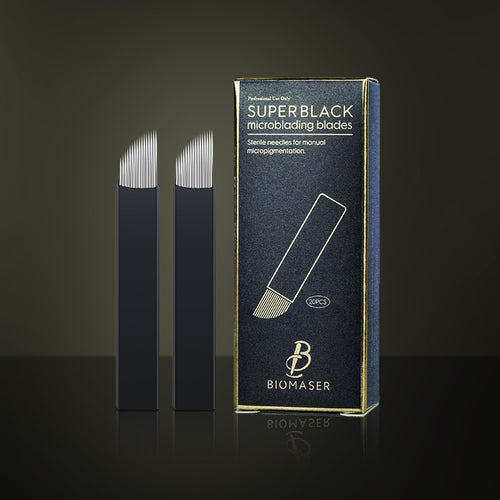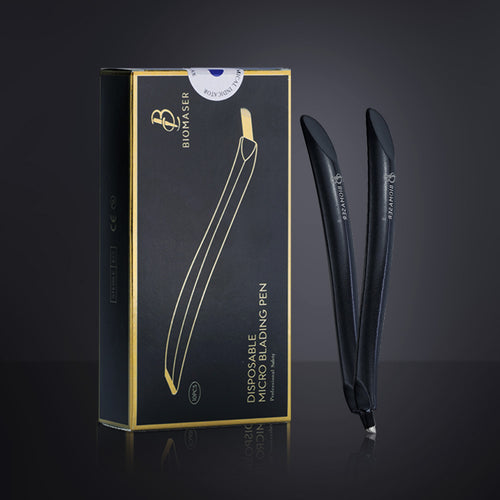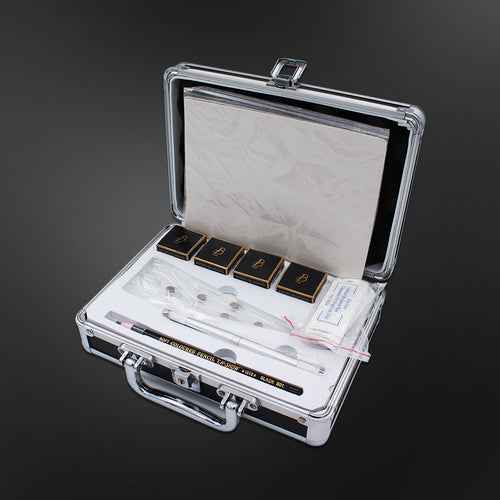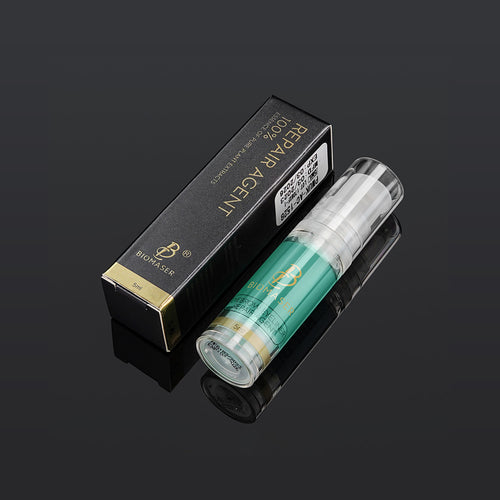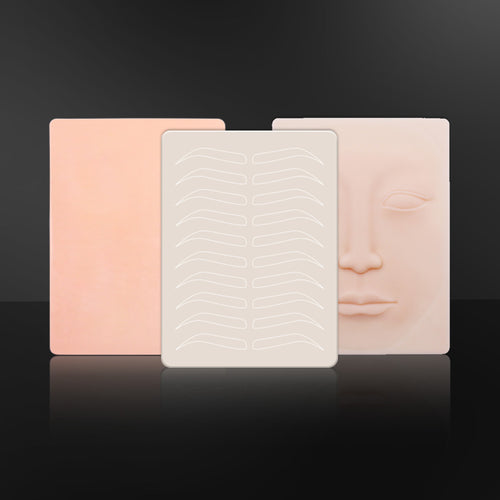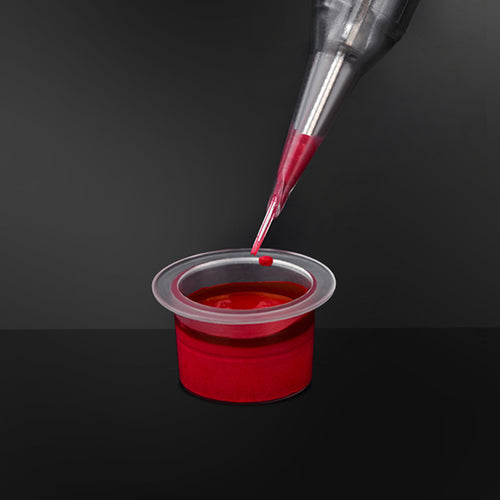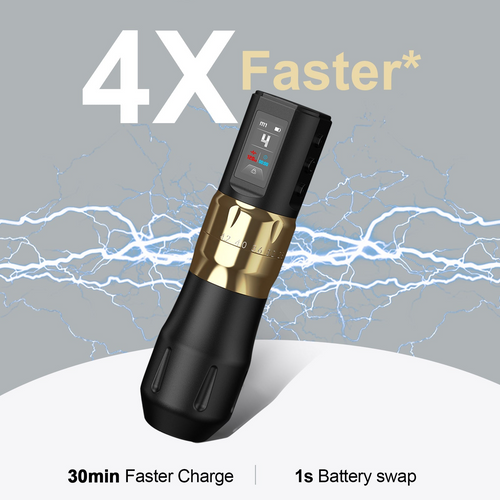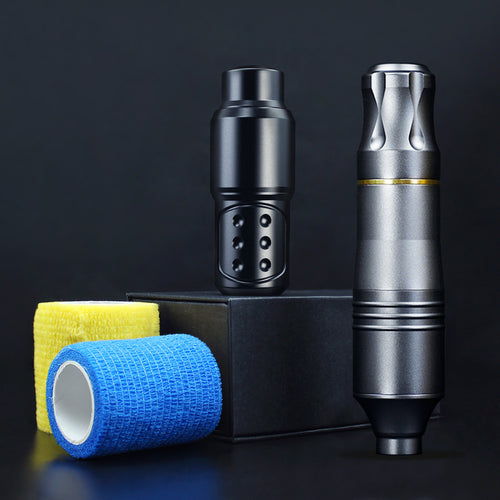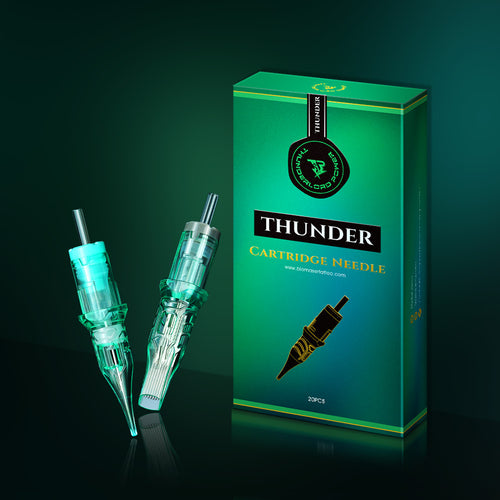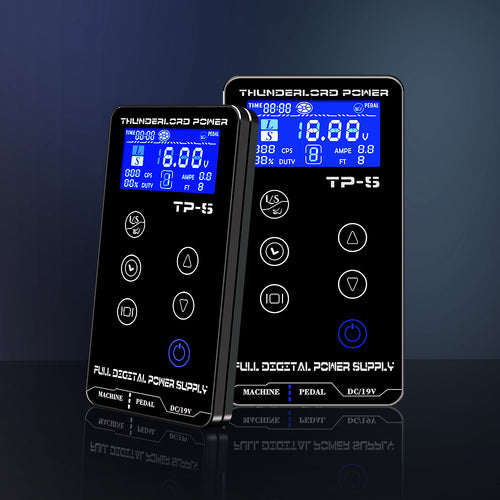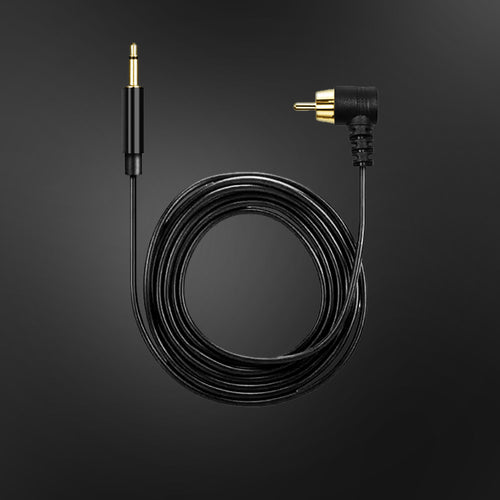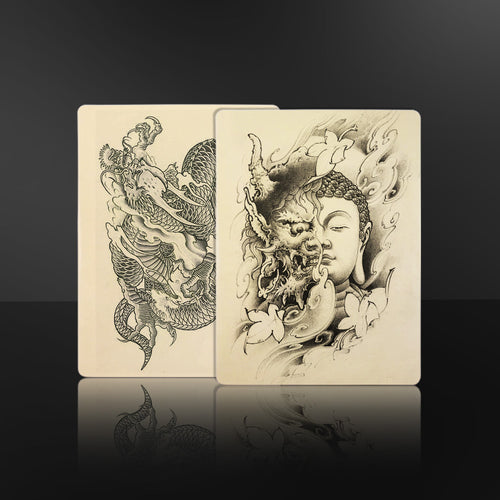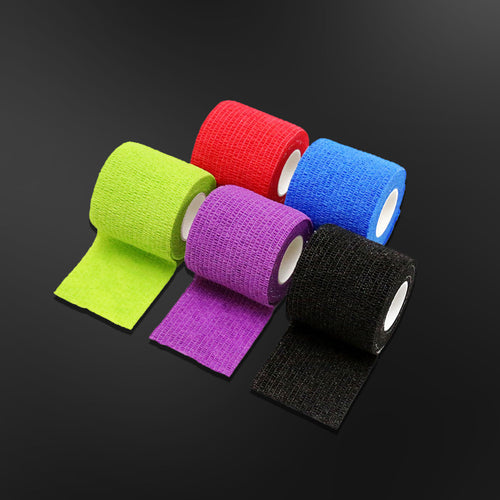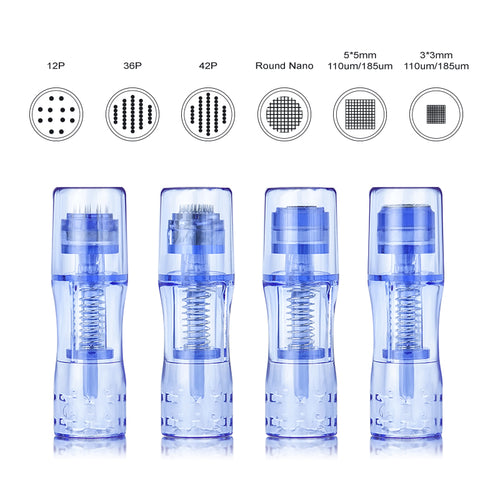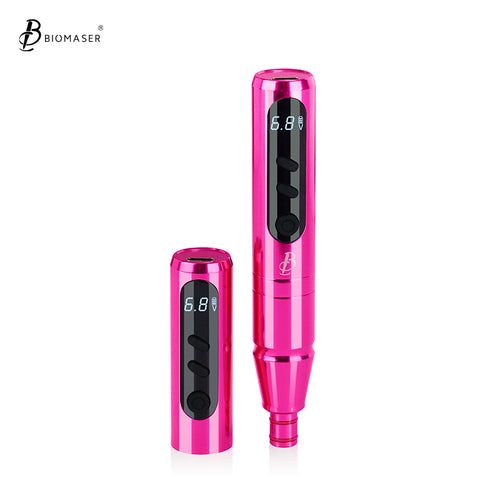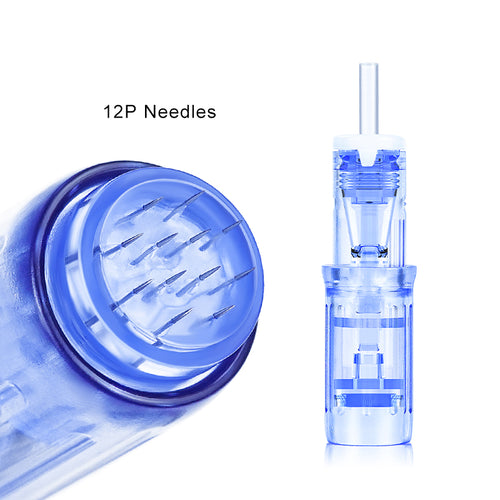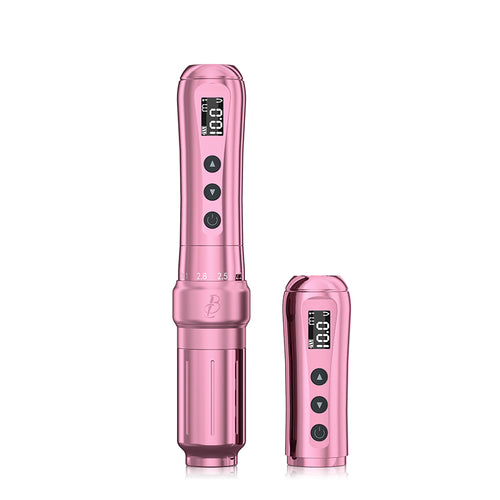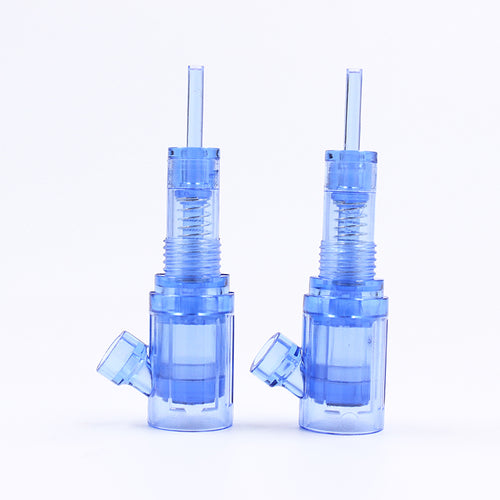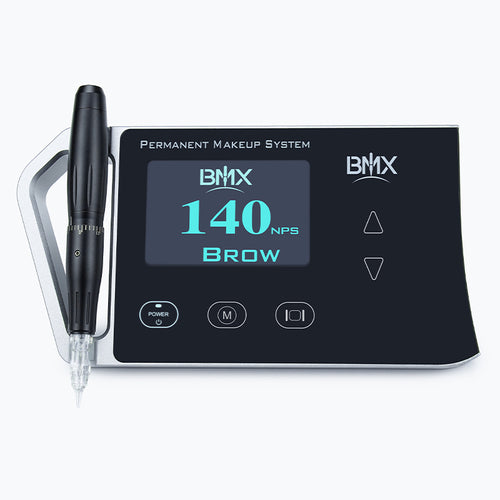A Beginner's Guide to PMU Needles: Explaining RL, RS, F, and Magnum Configurations
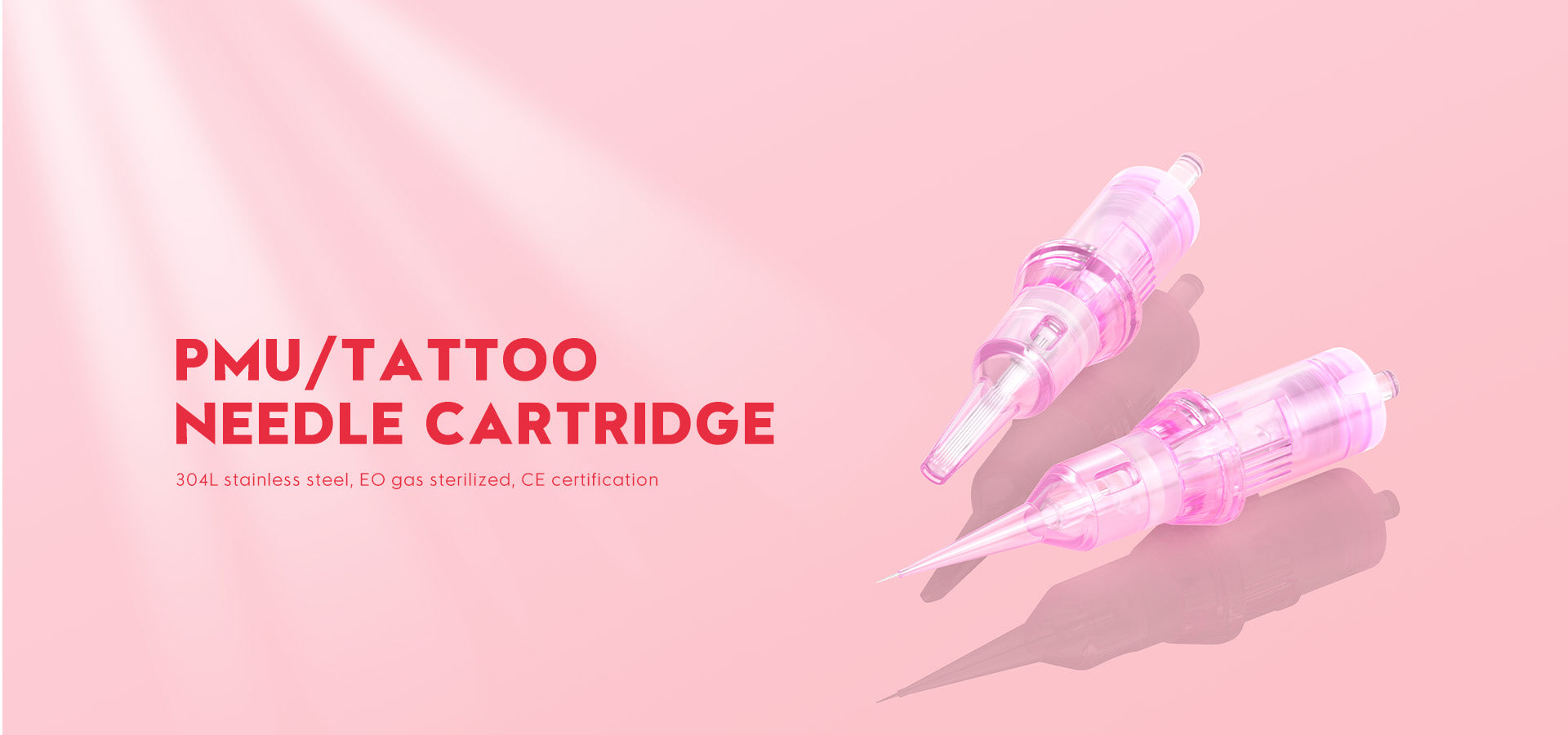
| Needle Type | Configuration | Best For | Result |
| RL | Tight Circle | Outlining, Hair Strokes, Pixels | Crisp, Fine Lines |
| RS | Loose Circle | Small Area Shading, Powdering | Soft, Pixelated Effect |
| F | Flat Line | Solid Color Packing, Edges | Solid Color, Geometric Shapes |
| U | Curved Single Row | Soft Edges, Curved Lines | Even Fills on Contours |
| XF | Sloped/Staggered Row | Textured Fills, 3D Effects | Natural Texture, Dimension |
| M1 | Weaved Double Row | Large, Soft Shading | Airy, Gradual Blends |
| M2 | Stacked Double Row | Dense Color Packing | Solid, Saturated Fills |
| CM | Curved Double Row | Large, Seamless Shading | Smooth, Blended Fills |
Great permanent makeup requires the right tool for the job. For new artists, needle codes like RL, RS, and F can seem like a complex puzzle. Picking the wrong one leads to poor color retention and unhappy skin. We're here to translate these codes, helping you match the right needle to your artistic vision.

What is a PMU Needle Configuration?
A PMU needle is not just a single point. It is a cluster of very fine, sharp needles, often called "sharps," that are soldered together onto a needle bar. These sharps are then housed in a plastic casing to become the pmu needle cartridges you load into your machine. The term "configuration" simply refers to the way these individual sharps are arranged. A group of needles might be in a circle, a flat line, or a double row. This arrangement directly influences how the needle implants pigment into the skin and is the primary factor that makes a needle suitable for lining, shading, or packing color. The configuration is what gives each type of tattoo needle its unique purpose. The material composition of these components is crucial for ensuring safety and performance.
Beyond the configuration, a few other terms appear on needle packaging that are critical to know. These specifications give you even more control over your results and are key to mastering different permanent makeup needle sizes and styles.
Diameter (Gauge)
This is the thickness of each individual sharp in the needle cluster. It's measured in millimeters, with common sizes being 0.20mm, 0.25mm, 0.30mm, and 0.35mm. A smaller diameter (like 0.25mm) creates a finer dot of pigment and is great for detailed work or clients with thin skin. A larger diameter (like 0.35mm) allows more pigment to flow, which is useful for shading larger areas more quickly.
Taper
The taper is the length of the point at the very tip of each sharp. A short taper has a stout point and releases pigment quickly, creating bolder lines. A long taper has a much finer point, which creates sharper lines and causes less trauma to the skin, allowing you to work over an area multiple times if needed.
| Taper Type | Example Length | Key Characteristic | Best For | Trade-Off |
| Long Taper | 5.0 mm | Fine point, minimal skin trauma, gradual pigment flow. | Delicate hair strokes, fine details, sensitive/mature skin. | Requires more passes for full color saturation. |
| Medium Taper | 3.0 - 3.5 mm | Balanced performance; good pigment flow with moderate trauma. | All-purpose use; versatile for lining & shading. Ideal for beginners. | Not as precise as a long taper or as fast as a short taper. |
| Short Taper | 1.5-3.0mm | Stout point, rapid pigment deposit, creates a larger puncture. | Dense color packing, bold lines, thick or resilient skin. | Higher skin trauma; can lead to longer healing and patchiness if used improperly. |
Count
This is simply the number of sharps in the configuration. The count is indicated by the number at the beginning of the needle code. For example, a 3RL has three sharps, while a 9M1 has nine. A higher count covers more surface area.
Next, let's get to the core of the matter: the different needle families. Each group is designed for a specific task, and using the right one will make your work cleaner and more efficient.
Round Liners (RL): For Crisp, Clean Lines
Round Liners, or RLs, are perhaps the most fundamental type of PMU needle. The sharps in an RL configuration are soldered together in a tight, round circle. This design pulls the needles into a fine point, making them the perfect tool for creating precise lines. If a procedure requires outlining or any kind of distinct linework, an RL is almost always the right choice.
Best For:
- Eyebrow Hair Strokes: A 1RL (a single needle) is a popular choice for creating the most delicate, realistic hair strokes. Larger RLs like a 3RL can be used for slightly bolder strokes.
- Defining Eyeliner: RLs create sharp, clean classic and winged eyeliner.
- Outlining Lips: Before filling the lips with color, an RL is used to establish a crisp, defined border.
- Fine Details: Any small, detailed work, including beauty marks or pixelated effects, is done well with a Round Liner.
Round Shaders (RS): For Soft Shading and Blending
At first glance, Round Shaders (RS) look similar to liners, as their sharps are also arranged in a circle. The key difference is that the sharps in an RS are spaced further apart. They are not pulled into a tight point like a liner. This looser arrangement makes them less ideal for creating hard lines and much better for shading, blending, and filling in small to medium areas. An RS deposits color more softly than an RL, making it perfect for creating a "powdery" or "airbrushed" look. It's more like a felt-tip marker.
Best For:
- Powder and Ombré Brows: An RS is excellent for building up soft, pixelated color to create a powdered eyebrow fill.
- Lip Blush Shading: It works well for shading lips, especially for blending the color from the vermilion border inward.
- Smudgy Eyeliner: For a softer, less defined eyeliner look, an RS can be used to create a smudgy or shaded effect.

Flats (F): For Packing Color and Sharp Edges
Flat needles are arranged in a single, straight row, like a mini paintbrush. This design allows for consistent pigment delivery across medium to large areas, making it ideal not just for solid fills, but also for smooth gradient transitions.
Best For: Eyebrow shading, overall lip fill, medium-to-large area color layering.
Curved Flats (U): For Blended Shading and Precision
Curved Flats feature a single row of needles shaped in a soft arc or “U.” This curvature ensures the center needles contact the skin first, allowing smoother entry and exit with minimal trauma. They are perfect for both broad blending and delicate line work.
Best For: Lip shading, soft eyeliner, ombré brow transitions.
Advantages:
- Dual technique use: flat for packing, side for detailing
- Reduces harsh edges and line marks
- Ideal for large area blending with high pigment coverage
X Flat (XF) : For Dimension and Realistic Texture
X Flats are unique single-row configurations where each needle is arranged at slightly different heights, forming a sloped or staggered line. This high-low structure gives the needle superior pigment-carrying ability and allows for more nuanced texture effects.
Best For: Creating 3D effects in lips or brows, layered ombré shading, realism-focused PMU.
Advantages:
- Delivers textured, layered shading with minimal passes
- Mimics natural hair density or lip contours
- High pigment saturation and coverage with softer transitions
Magnums (Mags): The Shading Powerhouses
Magnums are the go-to tattoo needles for shading large areas efficiently and smoothly. They consist of two rows of needles, which allows them to cover more ground with each pass and causes less trauma than trying to shade a large area with a small round needle. There are a few different types of magnums, each with its own strengths. Using the right magnum from your collection of tattoo needle cartridges can dramatically improve the quality and softness of your shading.
Weaved Magnums (M1)
In a weaved magnum, the two rows of sharps are spaced apart, with the needles in the top row positioned between the gaps of the bottom row. This "weaved" design allows for more space between the sharps, which results in a softer, more diffuse application of pigment. It is gentler on the skin and is perfect for creating soft gradients and airy shading. They are excellent for lip blush and areola reconstruction.
Stacked Magnums (M2)
In a stacked magnum, the two rows of sharps are packed very tightly together. This dense grouping delivers more pigment at once, making stacked mags ideal for packing in solid color over a large area that needs to be fully saturated.
Curved Magnums (CM or SEM)
A Curved Magnum is the most popular magnum type in permanent makeup. It has the same double-row structure, but the needles are arranged in an arch. This curve allows the needles to enter and exit the skin more smoothly, preventing the harsh edges that can sometimes be created by a regular flat or magnum. The arch fits nicely against the curved contours of the face, like the lips, making it easier to create very smooth, even blends.

5 FAQs About PMU Needles
Q1: Can I use a liner for shading?
Yes, you can. This technique is often called "pixelating," "dotwork," or "whip shading," where an artist uses a liner (often a 1RL or 3RL) to create shading with tiny dots of pigment. It can produce a beautiful, airy effect. The downside is that it is very slow and inefficient for filling in large areas. For a full powder brow or lip blush, using a magnum is much faster and generally causes less overall trauma to the skin than making thousands of passes with a liner.
Q2: What is the difference between a 3RL and a 5RL?
The number simply refers to the needle count. A 3RL contains three sharps, and a 5RL contains five sharps. Because it has more needles grouped together, a 5RL will create a thicker, bolder line than a 3RL. When choosing between different permanent makeup needle sizes for lining, consider the desired outcome. For very fine, delicate lines, use a lower count like a 1RL or 3RL. For bolder outlines, a 5RL or 7RL might be more appropriate.
Q3: What are Curved Magnums (CM) best for?
Curved Magnums are exceptionally versatile shaders, but they truly excel on curved parts of the body. Their arched shape is perfect for procedures like lip blush, where you are working on a soft, rounded surface. The curve helps disperse the pigment very evenly and prevents the outer needles from digging into the skin, which can create harsh lines or "tram tracks." This results in a much smoother, more seamless blend of color.
Q4: My hair strokes look blurry. Is it my PMU needle?
The needle is a very likely culprit. Blurry or "blown out" hair strokes can happen for a few reasons, but needle choice is a big one. You might be using a needle with too large a diameter, or you might have accidentally grabbed a Round Shader instead of a Round Liner. For the crispest strokes, many artists rely on a 1RL with a long taper. Of course, technique also plays a huge part—working too deeply or at the wrong angle can also cause pigment to migrate and blur. Understanding the correct needle depth prevents these issues and ensures crisp, well-healed results.
Q5: What is the difference between a PMU needle and a standard tattoo needle?
While they share the same basic configurations (RL, Mags, etc.), the main difference is in scale and specialization. PMU needles are generally much finer, with smaller diameters (e.g., 0.18mm, 0.25mm) designed for the delicate skin of the face. Standard tattoo needles for body art can be much thicker. Additionally, PMU needle cartridges often feature a long, gradual taper. This creates a very sharp point that causes less trauma, which is critical when working on sensitive areas like the eyelids or lips.
